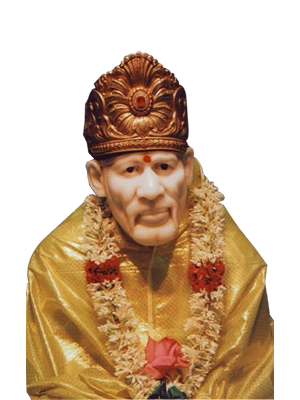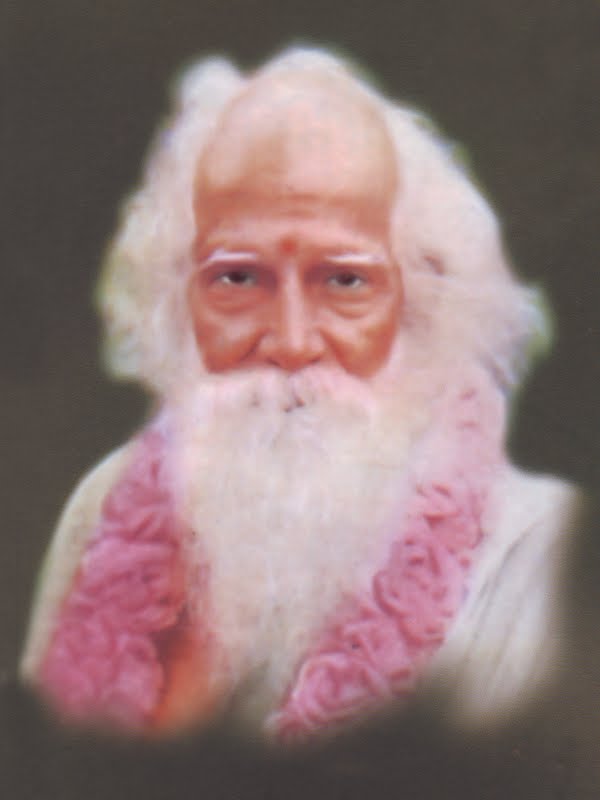About Founder President
- Home
- About Founder
Join us in making a difference — Become a donor today!

Founder President – All India Sai Samaj
Sri B.V. Narasimhaswmi was born in the year 1874, 21st August in a well-to-do and orthodox Brahmin family resident at Salem His father was one Sri B. Venkatagiri lyer, a second grade pleader at Salem who owned one of the biggest houses in the second Agraharam at Salem. Narasimhaswami had a younger brother who when a child of six or seven was kidnapped while playing with other children in the street anc was murdered for the sake of costly ornaments which he hac been wearing. The murderer was in due course apprehended, tried and sentenced to death. Narasimhaswami then became the sole surviving son of his parents. He had a brilliant educational career, passed his B.A. Degree Examination from the Madras Christian College and the B.L. Examination from the Madras Law College. He straightaway joined the Bar and began to practise at Salem. That was in 1897. Very soon, he became one of the leaders of the Salem Bar and in any case, when I myself went to Salem in 1907 to practise the profession of law, I found that he was one of the top men at the bar. Not content with acquiring fame and money as a Lawyer, he became interested in all the public movements of the day and came soon to be regarded as an important leader of the political movements and agitation of that very interesting period. In politics, he was a follower of BalGangadhar Tilak and was therefore counted as an extremist. This made him enormously popular with the people and therefore in 1914, he was easily elected to the Legislative Council of those days. He was a member of the Home Rule League of Mrs. Annie Besant and sailed for England to place the case of India for Home Rule before the British public but was detained at Gibralter and sent back to India. Evidently the British Government was afraid otwhathe might achieve in Britain. In 1920, he seemed to be at the height of his power and prestige. In his own words at p. 312 of the second Volume of the Life of Sai Baba, he was "one of the foremost in the ranks of lawyers and political agitators, legislative councillor and Home Rule Workers". He was leading a decent life, had built a spacious bangalow in the Sivaswamipuram Extension of Salem, and was engaged in repairs to and the extension of Lakshminarayana Temple at Salem. It then pleased Providence suddenly to draw him away from all those worldly concerns by what was an unbearable and terrible domestic calamity. His two little boys died of accidental drowning in a well in his own compound.

Founder President – All India Sai Samaj
H.H. NARASIMHASWAMIJI
21/08/1874 – 19/10/1956
A brief autobiographical account of his subsequent life as narrated by the Swamiji himself will be found at pp. 312 to 318 of the 2nd Volume of the Life of Sai Baba. "Even before the bodies of the children were taken out from water, it had dawned upon him that this dreadful thunderbolt had a meaning and that Providence was directing him thereby not to use up his energies and attention, in Law or politics, and social or domestic affairs, but to consecrate himself for the service of mankind by the search of God and the ascertainment and adoption of steps for realization of God and Self". He resigned his membership of the Legislative Council, returned his Sunnud of High Court Vakil, released all his interests in property, soon completed the repairs and extensions to the Lakshminarayana Temple and wound up its accounts, left home and family and proceeded to Tiruvannamalai which had just acquired fame as the seat of penance of Ramana Maharishi. There he remained from 1928 to 1931, leading a life of cloistered seclusion, studying Vedanta and other religious works, and writing the life of the Maharishi. The book which was given the title of 'Self Realisation' was a great and original work and was mostly responsible for making the Maharishi known not only within India but even outside. It was through our Swamiji's biography of the Ramana Maharishi that Mr. Paul Brunton became acquainted with the Maharishi, and the role of Paul Brunton in spreading the fame of the Maharishi is well known.
Narasimhaswami was the exemplar and exponent of Bhakti Yoga and was not attracted by the Yoga of Ramana Maharishi for long. He left Ramanasramam in 1931 and began to continue his quest for a Guru. He visited Pandarpur, Nasik and other places. At Nasik, he contacted Mehr Baba, a disciple of Upasani Baba and was advised by the followers of Mehr Baba to meet Upasani Baba at Sakori. He then went to Sakori, met Upasani Baba and was confirmed in his preference to Bhakti marga. He studied Upasani Baba, stayed with him for several years and wrote and published his life in 1935. He then learnt that Upasani Baba was himself a disciple of Sai Baba. But Sai Baba had died in 1918. Though he was dead physically, his spirit was alive and operating. Our Swamiji developed a strong one-pointed bhakti towards him (ananya-chinta) and in due course entirely surrendered himself to him. During the last twenty years of his life, the sole mission of our Swamiji was to build up and strengthen the All India Sai Samaj, to spread the Sai faith and with that object to publish details about the Life of Sai Baba and his devotees, to address hundreds of meetings and to issue innumerable pamphlets and write numerous magazine articles about his services and teachings. In propagating the Sai faith, he has revived the popular faith in God and in the moral law, elucidated the fundamentals of all religions and expounded the underlying principles of Hindu religion and philosophy. To him, Baba is not a mere abstraction, but even now a living God, a felt person who can be seized by those who love him and are in dead earnest. The temporal and spiritual benefits which he bestowed on his disciples when he was alive can be derived even by his present devotees by concentrated love.
As a native of Salem Town, I know the Swamiji from my boyhood both from reports and from personal knowledge. His most outstanding quality was his universal love, kindness and tolerance. Sweet of voice and speech, with, a smile and kind word to everybody, he was the very embodiment of courtesy to high and low.
He knew Sanskrit and was an all-round scholar. He was fond of books and study. The biographies he has written are masterpieces of clear and elegant prose, studded with apt and brilliant quotations from Shakespeare, Wordsworth, Tennyson and other poets or from the English Bible or from Tamil or Sanskrit classics including the Bhagavad Gita and the Upanishads. When I was a student in the Salem College from 1893 to 1900, the Principal and teachers of that College often used to invite outsiders to set question papers for the annual examinations of the College and our Swamiji was an examiner for us in the Ancient History of Greece and Rome. At that time, he must have left college more than ten or twelve years previously, but he still retained his interest in such Ancient History.
From his early years, he was inclined towards religion and religious studies. When he was a student of the B.A. Class in the Madras Christian College, he became so deeply interested in the life and teachings of Jesus Christ and in the study of the Bible that his friends and family seem to have feared that he might become a convert to Christianity. But his love of Sanskrit and the Hindu Religion was too strong to permit him to think of apostasy. In the years 1917 to 1920, 1 was District Munsiff of Negapatam. During that period, the Swamiji once visited that place and did me the honour of taking his meals once in my house. He was then observing the vow of complete silence during meals and though I did my best to provoke him to utter a word he kept his vow. It seemed to me even then that he was attempting some kind of mental yogic disciplines.
The Tamil Poet says that persons having an eye to business will not mind bodily discomforts (கண்ணாயினார் மெய்வருத்தம் பாரார்). In his sincere attempt to collect all the information he could about Sai Baba, and in his attempt to popularize and spread the worship of Sai Baba, the Swamiji had to endure many inconveniences and discomforts but he bore them all gladly. In his "Sage of Sakori" he himself has written at p. 152, "At the very first visit of this writer to Sakori, the accommodation he got was so ill-adapted to his constitution that he felt his stay very painful especially because he could not get sleep." Looking at his worried face, the Sage of Sakori is said to have only told him that people should rejoice at having to suffer when suffering came. "Tapaswins go and seek these sufferings. If they come of their own accord, are we not better off?" That was the spirit in which our Swamiji bore his discomforts.
Before concluding, I may be excused for referring to two personal matters even at the risk of being considered vain or pedantic. The Swamiji, in 1955 conferred on me the privilege of reading through the typescripts of his Life of Sai Baba before they were sent to the Press. For that privilege it was that I was indebted to him and must be grateful and in fact I was sincerely grateful to him. But the following sentences are found in the Preface to the 1" volume of the Life of Sai Baba: - "Sri Divan Bahadur R. V. Krishna Ayyar for whom the author has entertained always high regard and love, came up and went through over 502 sheets of typed matter, making the necessary corrections. This was in the midst of his official work. So sincere thanks are due to him.’ This must be regarded as an illustration of how God bestows great and disproportionate rewards even for small acts of goodness. The Swamiji attained Maha Samadhi on 19-10-1956. It was on the previous day that I came to know of his weak condition. I was preparing to go to his place to see him but was doubtful whether I could get into his presence and see him. What was my surprise when at that time, by a kind of divine coincidence, a messenger came to me from the Swamiji informing me that the Swami would like to see me! Immediately I went up to him, stayed for a few minutes with him and received his blessings.He knew that he had only a few hours more to live but was totally unconcerned and fearless about death. He talked as usual, and the peace and calm of his mind were radiated in his face. Trusting in God and his Guru, he had conquered Death. He is now among the Immortals. His influence will ever live and he will always guide the destiny of the Sai Samaj.